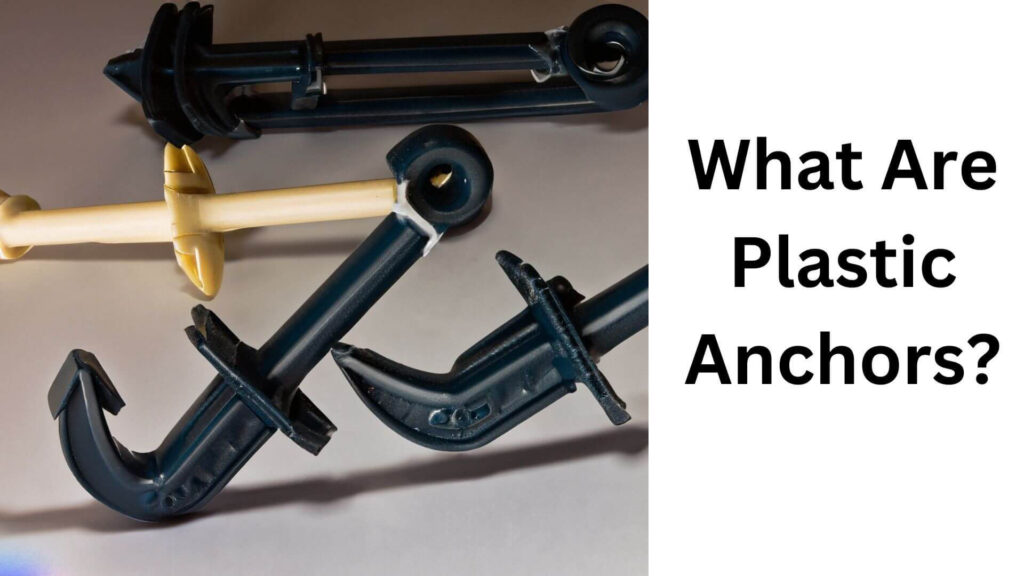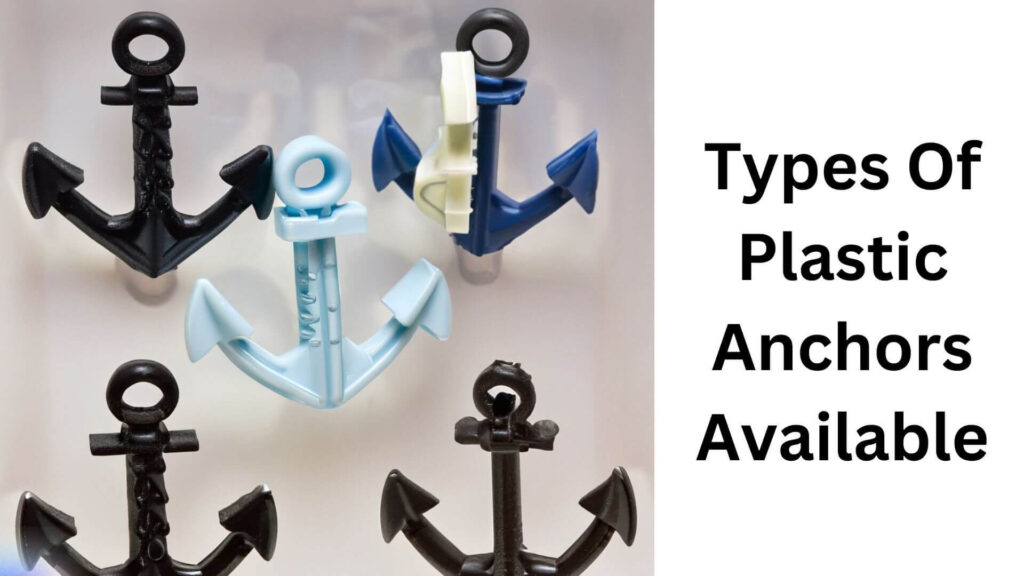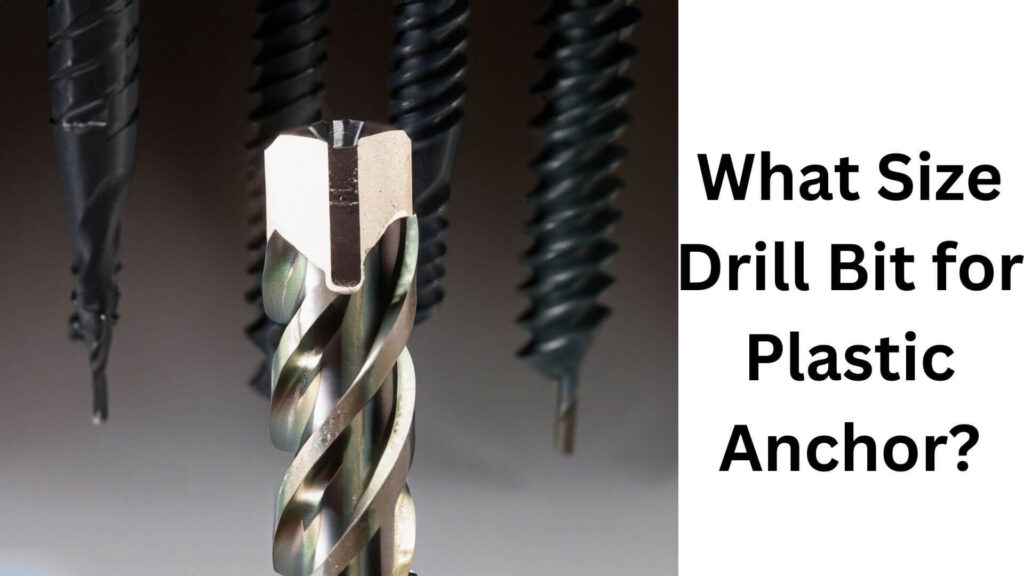Are you planning on hanging something on a wall with plastic anchors but are unsure of the correct drill bit size? Fear not; I’ve got you covered.
The size of the anchor itself determines the appropriate size of the drill bit for a plastic anchor. When installing an anchor into any material, having the correct size drill bit is essential. how do you know which one to choose?
This is especially true when working with plastic anchors. The size of the anchor itself determines the size of the drill bit needed for a plastic anchor. If the drill bit is too tiny, the anchor may not fit properly, and if the drill bit is too large, it may cause damage to the surrounding material.
It is essential to carefully read the manufacturer’s instructions and select the correct size drill bit for the specific plastic anchor being used. Taking the time to ensure the proper tools and equipment are used can make all the difference in the project’s success.
Table of Contents
What Are Plastic Anchors?

You may need plastic anchors if you want to install shelves, picture frames, or other objects onto your walls. These little devices fit into a hole drilled into the wall and expand as the screw is inserted, providing a secure foundation.
However, not all plastic anchors are created equal, and using the appropriate size drill bit is essential for the best results.
Here I’ll detail the different types of plastic anchors and the drill bit sizes required for each.
Read More: Ultimate Plastic Drill Bits: Top Picks for Superior Performance!
Brief Explanation Of What Plastic Anchors Are And Their Uses
Plastic anchors provide a secure base for screws and bolts to be inserted into, allowing you to hang objects on your walls without compromising the strength and stability of the wall itself.
Unlike metal anchors, plastic anchors are affordable, easy to install, and often come in various sizes to suit different needs.
They are commonly used in drywall, concrete, and masonry, making them perfect for diy projects.
The Types Of Plastic Anchors Available

Several plastic anchors are available, each suited to different types of walls and fixtures. Here are some brief explanations of each type:
- Expansion anchors: These are the most common type of plastic anchor and come in various shapes and sizes. They work by compressing against the wall as the screw is tightened, providing a secure hold for most fixtures.
- Threaded anchors: These anchors feature threads on the outer surface, making them suitable for use with wood or other soft materials. The screw threads into the anchor provide a stronger hold than other plastic anchors.
- Self-drilling anchors: These anchors feature a drill bit on the end, allowing you to drill the hole and insert the anchor in one step. They are perfect for use with more rigid materials or for cases where you don’t have a drill on hand.
Drill Bit Sizes For Plastic Anchors
The size of the drill bit you’ll need for your plastic anchors will depend on the anchor size you’re using. You should choose a drill bit smaller than the anchor itself to ensure a tight fit.
Here are some common drill bit sizes for popular plastic anchor sizes:
- 3/16 inch anchor: 5/32 inch drill bit
- 1/4 inch anchor: 3/16 inch drill bit
- 5/16 inch anchor: 1/4 inch drill bit
- 3/8 inch anchor: 5/16 inch drill bit
Always refer to the anchors’ packaging to ensure you use the correct size drill bit. Using the wrong size can lead to an unstable fixture or even damage your wall.
Plastic anchors are versatile and affordable for hanging objects on your walls. By understanding the different types of anchors available and the appropriate drill bit sizes required for each, you can ensure a secure and stable installation every time.
Read More: Hole Drilling in Plastic: Creative Alternatives to Traditional Drills!
What Size Drill Bit Is Suitable For Plastic Anchors?
When it comes to diy home improvement projects, using plastic anchors is standard practice. They are indispensable when hanging light objects such as picture frames, shelves, or blinds. However, several factors must be considered when choosing the right drill bit.
Factors To Consider When Choosing The Right Drill Bit Size For Plastic Anchors:
- Anchor size: The size of the anchor will depend on the weight of the object you want to hang. Ensure you choose the right anchor size before selecting the drill bit size.
- Material: Different materials require different drill bit sizes. For plastic anchors, you must use a slightly smaller drill bit than the anchor itself so the anchor can fit snugly.
- Wall type: The thickness of your wall and the type of material it’s made from will also determine the correct drill bit size.
Best Practices For Choosing The Right Size Drill Bit:
Check the packaging: Many plastic anchor packages have recommended drill bit sizes. Make sure to read the label before drilling.
Measure the anchor’s diameter: Use a caliper to measure the anchor’s diameter and select a drill bit slightly smaller than the anchor.
Test the anchor: Before drilling the hole, test the anchor by inserting it into the hole. If it does not fit snugly, select a smaller drill bit size.
Remember, choosing the right size drill bit is crucial to ensure the stability and safety of your objects. Follow these best practices and select the appropriate size drill bit for your plastic anchor needs.
How To Choose The Right Drill Bit Size For Your Plastic Anchors
Drilling holes for plastic anchors forms the foundation of any project. A slight deviation in the drill bit size can severely compromise the entire assembly.
Below is a step-by-step guide to help you determine the appropriate drill bit size for your plastic anchors.
Step By Step Guide On How To Determine The Appropriate Drill Bit Size For Plastic Anchors
- Identify the size of the plastic anchor to be used.
- Find the recommended drill bit size on the packaging or in the instructions for the anchor.
- If the recommended size is unavailable, measure the anchor’s widest diameter and choose a drill bit that is slightly smaller than that measurement.
- Mark the desired depth of the hole on the drill bit with tape or a marker.
- Drill the hole with even pressure and hold the drill perpendicular to the surface.
- Test the anchor by inserting it into the hole and ensure that it fits snugly without excessive force.
Tips And Tricks To Ensure Accuracy And Precision
To achieve accurate and precise holes for your plastic anchors, follow these tips and tricks:
- Always wear safety goggles when operating machinery.
- Use the appropriate type of drill (corded or cordless) and drill bit based on the type of plastic and the hole size to be drilled.
- Start by drilling a pilot hole to avoid the drill slipping and causing inaccuracies.
- Drill slowly and steadily, without forcing the drill, to avoid cracking or melting the plastic.
- Clean the drill bit regularly to remove debris and prevent clogging.
- Choose the appropriate drill bit material based on the plastic’s hardness and density.
Following these guidelines, you can confidently and accurately drill holes for your plastic anchors, ensuring long-lasting and stable connections.
What Size Drill Bit For 10 Plastic Anchor?
When it comes to installing plastic anchors, selecting the right drill bit size is crucial. To determine what size drill bit to use, you need to consider the size of the anchor.
As a general rule of thumb, select a drill bit slightly smaller than the anchor’s diameter. This ensures a snug fit, which is essential for the anchor to perform effectively.
For example, if the anchor is 1/4 inch in diameter, use a 3/16 inch drill bit. It is important to note that the type of plastic anchor you use may require a slightly different drill bit size, so check the manufacturer’s instructions.
Additionally, it’s essential to use a drill bit appropriate for the material you are drilling into, such as wood, drywall, or concrete. By following these simple instructions, you can ensure a secure and successful installation of plastic anchors.
What Size Drill Bit For 6 Plastic Anchors?
If you’re looking to secure something onto a wall made of drywall, you’ll likely need to use a plastic anchor. However, finding the right size drill bit to use with the anchor can be tricky.
To start, you should check the packaging of the anchor to see if it specifies the drill bit size to use. If not, you can measure the diameter of the anchor with a ruler and use a drill bit slightly smaller than that measurement.
For example, if the anchor is 1/4 inch in diameter, you’ll want to use a 3/16 inch drill bit. It’s essential to use a drill bit smaller than the anchor to ensure that it fits snugly in the hole and doesn’t loosen over time.
Remember to consider the material you’re drilling into, as certain materials may require a different size drill bit.
What Size Drill Bit For 8 Plastic Anchors?
If you’re wondering what size drill bit to use for a plastic anchor, the answer is typically a 3/16-inch bit. This size suits most plastic anchors and will allow for a secure fit.
However, it’s important to note that the specific size may vary depending on the type and size of the anchor you’re using.
It’s always best to check the instructions or packaging for the recommended drill bit size. When drilling into plastic, it’s essential to use a low-speed setting and avoid applying too much pressure, which can cause the plastic to crack or break.
Take your time and use a steady hand to create a clean hole. Once the hole is drilled, insert the plastic anchor and tighten the screw to secure your item in place.
By following these simple instructions, you can ensure a safe and secure installation for all your plastic anchor needs.
Common Mistakes To Avoid When Choosing The Drill Bit Size For Plastic Anchors
When it comes to choosing the drill bit size for your plastic anchors, it’s essential to avoid some common mistakes to ensure that your anchors are secure and your project is successful. Here are some of the most common errors to avoid:
- Using the wrong size: One of the biggest mistakes people make is using the wrong size drill bit for their plastic anchors. If the hole is too small, the anchor won’t fit, and if it’s too large, the anchor won’t be secure.
- Ignoring the manufacturer’s recommendations: The manufacturer’s recommendations should always be your guide when selecting the right drill bit size for your plastic anchors. Ignoring their suggestions and using a different size can lead to poor results.
- Using the same size for different anchors: Not all plastic anchors are created equal and may require different drill bit sizes. Be sure to check the manufacturer’s recommendations for each type of anchor you’re using.
- Not testing the anchor before installing: Before you install your plastic anchor, it’s essential to test it in the drilled hole. This can help you prevent mistakes or make necessary adjustments before completing your project.
Tips To Help Prevent Avoidable Errors
To ensure that you choose the correct drill bit size for your plastic anchors, here are some tips to help you prevent avoidable errors:
- Use a gauge: A gauge is a tool that can help you determine the correct drill bit size for your plastic anchor. Simply match it to your anchor to determine the correct size.
- Use the correct type of bit: Not all drill bits are created equal, and different materials require different types of bits. Use a brad point or twist drill bit when working with plastic for the best results.
- Test the anchor first: Always test your plastic anchor in the drilled hole before installing it. This can help you ensure the anchor is the correct size and has a secure fit.
Follow the manufacturer’s recommendations: Always follow the manufacturer’s recommendations for the drill bit size to use with your plastic anchors. They know their product better than anyone, and their recommendations are a guide to the best results.
Remember, choosing the right size drill bit for your plastic anchors is critical to the success of your project. By avoiding common mistakes and following these tips, you’ll be on your way to completing a secure and successful project.
Frequently Asked Questions On What Size Drill Bit For Plastic Anchor
Can I Use Any Drill Bit For Plastic Anchors?
It’s best to use a specific drill bit size that matches your anchor to ensure a secure fit.
How Do I Determine The Right Size Drill Bit For My Plastic Anchor?
Check the packaging of your plastic anchor to determine the correct drill bit size, or use a sizing chart.
What Kind Of Plastic Anchors Need Specific Drill Bit Sizes?
Most plastic anchors require a specific drill bit size to fit securely, including ribbed and flat types.
What Happens If I Use The Wrong Size Drill Bit For My Plastic Anchor?
Using the wrong size drill bit can cause the anchor to become loose or fall out, compromising the expected load capacity.
Final Fate
As I have seen, the size of the drill bit required for a plastic anchor depends on the size of the anchor itself and the type of plastic it’s made from.
Using the wrong size drill bit can result in a loose or ineffective installation or even damage to the anchor or the surrounding surface.
Choosing the right size bit is important to ensure the anchor fits appropriately and securely, providing the necessary support and stability.
In addition, taking proper safety precautions, such as wearing eye protection and using the drill at the appropriate speed, can help prevent accidents and ensure a successful installation.
Always carefully read the manufacturer’s instructions before starting any project, and consult with a professional if you have any doubts or questions about the best approach.

Hey, I am Shihab Uddin, I’m a huge fan of DIY crafts. My workshop is where I spend most of my spare time, and I’m always working on some project. To that end, I’d like to share some of my knowledge and experience with you in power tools, woodworking, and other specialized materials fabrication.
I will guide you with genuine knowledge that can assist you with deciding whether a drill is appropriate according to your requirements or not. If you want to find the best drill and know which type of drill is most suited for your needs, then I can guide you with my expertise. My passion lies in helping others find the correct products they need at an affordable price.


